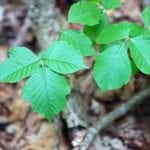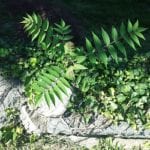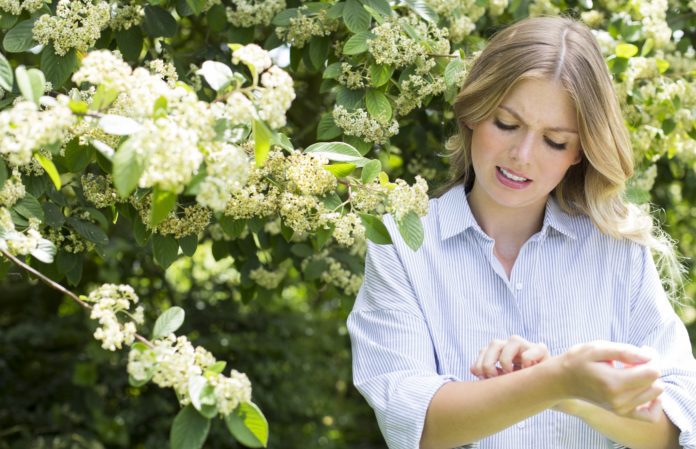We all want to enjoy our time outdoors: hiking trips, taking a bike ride through the woods, or getting our gardens ready. All of these activities are great, just remember to avoid the poisonous plants around you. It only takes a little sap to be zapped by a poisonous plant.
There are a variety of poisonous plants that you may come into contact with, such as poison ivy, poison oak or poison sumac. We want to give you some helpful tips to protect yourself and your loved ones when encountering any poisonous plants. Know where to go and how to treat the itchy rash and irritation some plants may cause.
How You Get Rashes from Poisonous Plants
Ever wonder how you got a rash from touching such a small plant? Each of the poisonous plants above secretes urushiol oil onto its roots, stem, and leaves. Once in contact with the skin, this oil often causes a combination of mild to severe rash*, itching, and blisters.
Each person has a different level of sensitivity to the urushiol oil and touching it more than once can also increase the chances of dealing with a more severe rash. Physical contact is not the only way to get this rash. Burning these plants could result in the oil spreading through the air and coating the soot. This coating could come into contact with your skin, but also areas that aren’t typically touched by the sap (eyes, nostrils, throat, or even inhalation into the respiratory system).
*These rashes are not contagious and cannot be spread person-to-person. While the oil will stay on any surfaces it has come into contact with (unless washed with water or rubbing alcohol), simply touching someone else’s rash will not cause you to get infected as well.
What Poisonous Plants Look Like
Poison ivy, poison oak or poison sumac all grow in the southeastern United States. The best way to avoid getting the rash and blisters is to not touch the plant.
 Poison Ivy: Each leaf on poison ivy has three leaflets that appear glossy. The edges of these leaves can be either smooth or toothed. Furthermore, these leaves can also appear as different in color when in different seasons. During the spring, the leaves appear reddish in color, and during the summer the leaves are green. The leaves are even present during autumn and can be yellow, red, or orange. Also, poison ivy can grow as a vine or shrub that appears to trail the ground, or climb low plants, trees or poles.
Poison Ivy: Each leaf on poison ivy has three leaflets that appear glossy. The edges of these leaves can be either smooth or toothed. Furthermore, these leaves can also appear as different in color when in different seasons. During the spring, the leaves appear reddish in color, and during the summer the leaves are green. The leaves are even present during autumn and can be yellow, red, or orange. Also, poison ivy can grow as a vine or shrub that appears to trail the ground, or climb low plants, trees or poles.
 Poison Oak: The leaves appear fuzzy and green and grow in groups of three. These leaves are deeply toothed with rounded tips. The plants typically grow as a low shrub; however, on the Pacific Coast, they have been known to grow in tall clumps or long vines.
Poison Oak: The leaves appear fuzzy and green and grow in groups of three. These leaves are deeply toothed with rounded tips. The plants typically grow as a low shrub; however, on the Pacific Coast, they have been known to grow in tall clumps or long vines.
 Poison Sumac: This poisonous plant grows as a small shrub in bogs or swamps. These leaves have clusters of seven to 13 smooth-edged leaflets growing along the stem. Like poison ivy, these leaves can appear different in color depending on the season. During the spring, the leaves are orange, but during the summer they are green. These plants are also present in the fall and can be yellow, orange, or red at that point.
Poison Sumac: This poisonous plant grows as a small shrub in bogs or swamps. These leaves have clusters of seven to 13 smooth-edged leaflets growing along the stem. Like poison ivy, these leaves can appear different in color depending on the season. During the spring, the leaves are orange, but during the summer they are green. These plants are also present in the fall and can be yellow, orange, or red at that point.
How to Treat Rashes from Poisonous Plants
After a few weeks, the effects of poison ivy will subside without any treatment. During that time, do not scratch the blisters as this could lead to infection. So, how do you calm the itching without scratching? Applying wet compresses or submerging the afflicted area in cool water can help. You can also get prescription oral corticosteroids or over-the-counter topical corticosteroids to alleviate that itching feeling. You may want to see a health care professional if you observe any of the following symptoms:
- You have a temperature over 100℉.
- There is pus, soft yellow scabs, or tenderness on the rash.
- The itching gets worse or keeps you awake at night.
- The rash spreads to your eyes, mouth, genital area, or covers more than one-fourth of your skin area.
- The rash is not improving within a few weeks.
- The rash is widespread and severe.
- You have difficulty breathing.
Learn Where To Go When It’s Not Life-Threatening
- MinuteClinics are a good alternative if you need to see a health care provider sooner than you can see your primary care physician (PCP), or if you need care outside of your PCP’s normal office hours. MinuteClinics can treat many minor illnesses and injuries and prescribe medications.
- Urgent care centers can also treat serious, but not life-threatening, illnesses or injuries — and they are open at times your PCP is not.
Subscribe to Emory Health Source
For more stories about how the people at Emory Healthcare make a difference, the care that helps patients every day, and health and wellness tips, subscribe to our monthly email newsletter.
About Emory Healthcare
Depending on the severity of your symptoms, we recommend either visiting your nearest Peachtree Immediate Care urgent care location or MinuteClinic.
If you aren’t experiencing any severe pain, a MinuteClinic can be a good alternative to visit in order to help keep the rash down and prevent infection.
However, if you are in pain, going to a local Peachtree Immediate Care can help reduce inflammation and provide access to a medical professional who can treat the infection.
As always, if you feel you are in a life-threatening situation, go to the nearest Emergency Department or call 9-1-1. When in doubt, don’t hesitate to call your PCP or the Emory HealthConnection at 404-778-7777 and speak to an Emory nurse for assistance.



